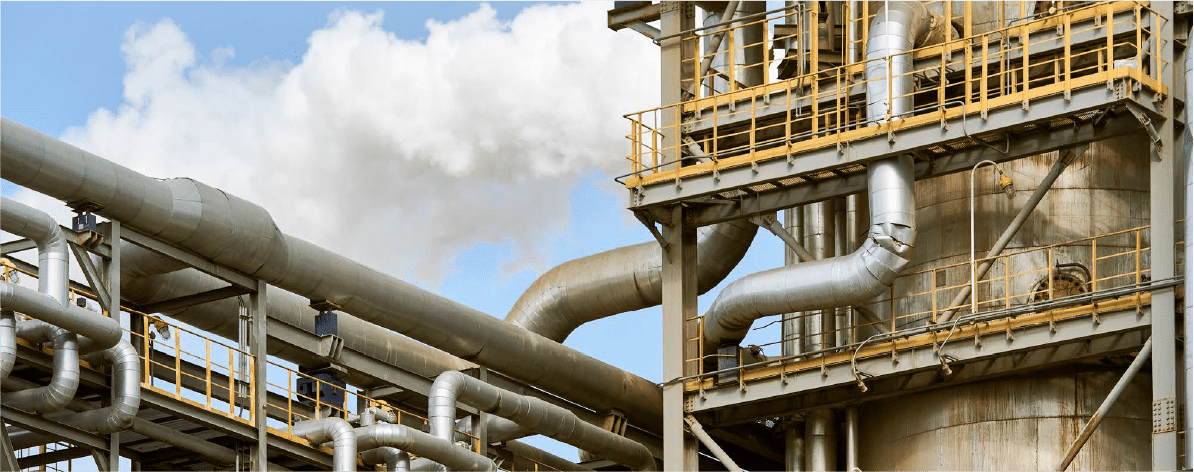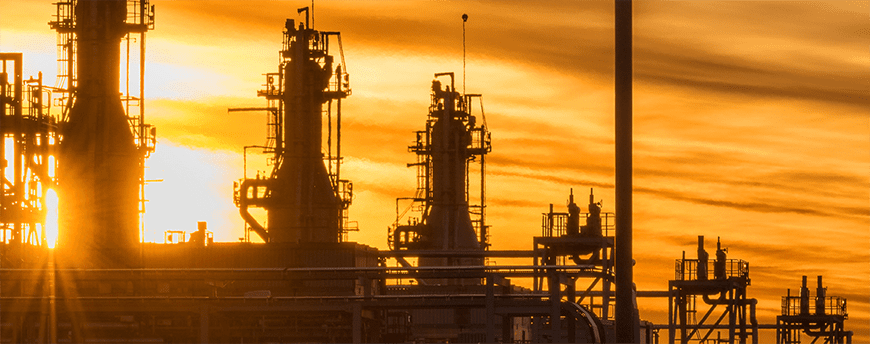KMG development strategy
Context
The oil and gas industry has been traditionally affected by turbulence resulting from disrupted oil supplies and price volatility. Over the past seven years, the industry has went through a series of ups and downs, from more than USD 100 per bbl in 2014 to minus USD 37 per bbl in 2020.
In 2022, a combination of economic, geopolitical, trade, political and financial challenges complicated the industry’s underinvestment. The oil and gas industry responded to what investors required in terms of prudent investments and financial discipline, causing CAPEX to go down.
Disrupted energy trade between Europe and Russia, new shortage of raw materials for renewable energy development, and challenges in supply chains for low-carbon technologies decelerated the pace of energy transition.
In 2022, global market imbalances drove energy prices up to record highs while also bringing in considerably improved cash flows for oil and gas companies. At the same time, the industry’s investment policy remains uncertain.
Against the global trends and developments of 2022, the key drivers of balanced growth for oil and gas companies today are energy security, diversified supplies and operations, and further transition to low-carbon development.
To this end, KMG’s goal today is about striking the right balance between ramping up investments and maintaining capital discipline.
KMG has a competitive edge in terms of a resilient production cycle from upstream to downstream that generates cash flows sufficient to deliver against the Company’s strategic targets. The Company exercises its priority right to assets onshore and off the shore of the Caspian Sea to grow its resource base.
With cheap feedstock readily available, KMG sees petrochemicals as its natural point of growth to rely on in expanding and improving the Company’s value chain.
KMG’s successful growth story is underpinned by sustained cash flow generation on the back of increased production and a sustainable development strategy. Given the long-term trends in the energy transition, KMG is building its portfolio of low-carbon projects to remain financially successful in a future zero-emissions world.
Our growth will be secured by the efficiency of existing production, development of new products, introduction of cutting-edge energy saving technologies, and carbon footprint reduction.

Vertically integrated national oil and gas company that meets the highest standards of safety, is committed to sustainability principles, and strives to maximise its financial performance.

We are effective and sustainable in our use of natural resources to ensure energy security, development and prosperity of Kazakhstan while also caring about future generations.
Responding to external and internal challenges, KMG goes ahead with a balanced strategy that combines oil, petrochemical and green projects.

Resource base sufficient to support the Company’s growth
To ensure stable production levels over the next decade, KMG has exploration projects – onshore and offshore in the Caspian Sea.
As part of this strategic goal, KMG plans to grow organically and inorganically to add new reserves sufficient both for conventional operations and new promising areas of activity.
KMG will be exploring and developing new reserves in Kazakhstan, among other things in strategic partnerships with global oil and gas majors.
In 2023, we are entering the active stage for our offshore projects Zhenis and Abay and onshore projects Turgai Palaeozoic, and Taisoigan. The FEED stage will begin at the Kalamkas-Sea–Khazar–Auezov block. On 9 February 2023, a number of agreements on the Kalamkas-Sea, Khazar, Auezov subsoil area development project in the Kazakhstan part of the Caspian Sea were concluded with LUKOIL.
Whenever there are attractive M&A opportunities and the market environment is favourable, KMG will be searching for and acquiring new assets.
Activities/developments of 2022 as part of the strategic goal
- First initiated in 2017, planned further exploration (high-resolution 3D seismic surveys, drilling of new wells, core sampling, etc.) at the Kalamkas field in the Mangistau Region helped grow recoverable oil reserves by 32.6 mln tonnes.
- On 16 June, KMG and LUKOIL signed Addendum No. 1 to the Principles Agreement on the Kalamkas-Sea and Khazar Project which provides for selecting the development concept for the Kalamkas-Sea, Khazar, and Auezov fields, and settles the key commercial terms for jointly running the subsoil use project.
- On 17 June, KMG and Tatneft signed an Agreement of Intent on joint implementation of the Karaton Subsalt exploration project in the Atyrau Region.
- On 15 September, KMG exercised its call option as part of the 2015 share option agreement to buy back 50% of KMG Kashagan B.V. from Samruk-Kazyna for USD 3.8 bln. KMG Kashagan B.V. owns 16.88% of the North Caspian Production Sharing Agreement.

Improved efficiency across the Company’s value chain
KMG focuses on its core operations seeking to maximise benefits from production, refining, transportation, and marketing of oil and to improve operations across all key segments.
To make up for the natural decline in production at its operating mature fields, the Company will continue working to increase oil recovery ratios and the time between repairs as well as engage in other measures to improve efficiency with a view to maximising well productivity.
At its large Tengiz, Karachaganak and Kashagan fields, the Company focuses on successful implementation of expansion projects and projects to maintain and extend production plateau.
The Company is committed to effectively leveraging the existing oil transportation infrastructure to enhance its exports and transit businesses. In response to external factors and geopolitical challenges, KMG works to create additional routes to export Kazakhstan’s oil. We are in talks with partners to open the southern corridor and ramp up supplies to China.
A major priority for KMG is to ensure seamless operation of refineries and meet domestic demand for oil products.
The Company is engaged in ongoing efforts to optimise its operating costs and make the supply chain more effective.
Activities/developments of 2022 as part of the strategic goal
- On 25 March, Kazakhstan’s first specialised laboratory for testing catalysts used in the production of oil products opened in Atyrau. Grace and KMG are evaluating the prospects for building a full-cycle plant in Kazakhstan to make catalysts used in the country’s refining industry.
- On 1 July, test operation started at the formation water desalination plant at the Karazhanbas field.

Business diversification and product portfolio expansion
The Company is developing petrochemical projects to produce polypropylene and polyethylene. The resource base for the projects is gas and its derivatives from the Tengiz field and other fields (propane, ethane, butane, etc.).
With cheap feedstock readily available, KMG sees petrochemicals as its natural point of growth to rely on in expanding and improving the Company’s value chain.
In late 2022, an integrated gas chemical complex of Kazakhstan Petrochemical Industries (KPI) Inc. was launched, boasting an annual capacity of 500 thous. tonnes of polypropylene. Another major project is the construction of a polyethylene plant with a capacity of 1.25 mln tonnes.
As part of growing its petrochemical business to diversify operations, KMG will rely on existing and new hydrocarbon resources to run petrochemical projects and make new products amid global shifts in oil demand in the long run.
Activities/developments of 2022 as part of the strategic goal
- On 13 June, KMG completed a deal to acquire a 49.5% stake in KPI Inc. from Samruk-Kazyna. On 8 November 2022, KPI’s polypropylene plant in the Atyrau Region with a design capacity of 500 thous. tonnes per year came on-stream.
- On 14 September, KMG completed the acquisition of a 49.9% stake in Silleno.
- On 9 December, KMG completed the acquisition of a 100% stake in KLPE.

Sustainable development and gradual reduction in carbon intensity of production
KMG recognises the importance of its economic, environmental and social impact and will continue embedding sustainability principles into the key business processes in order to ensure the alignment of the Company’s economic, environmental and social priorities and corporate governance targets.
The Company integrates its ESG goals within the framework for management performance evaluation on an ongoing basis.
In 2022, KMG received a score from the Sustainalytics international rating agency, with its ESG risk rating assessed at 28.4. This means that KMG’s risk was moved to the medium category.
KMG’s key ESG challenges are carbon emissions from operating activities and emissions from using the Company’s products, as well as community relations in our operating regions. By 2031, KMG aims to solidify its standing as a company with medium ESG risks.
KMG will develop an Employee Health Management Programme to better care about the health and well-being of the employees, with a focus on three major tracks:
- measures to tackle the pandemic and its implications;
- prevention of occupational diseases;
- improved employee awareness of, and motivation for, a healthy lifestyle.
To introduce unified approaches and improve occupational health performance, the Company will develop a corporate healthcare programme.
With the climate agenda now a matter of strategic importance, the Company runs the 2022–2031 Low-Carbon Development Programme, setting out KMG’s climate ambitions and key approaches and measures for carbon footprint reduction.
In its commitment to limit carbon footprint, the Company pursues a balanced approach, targeting a 15% reduction in greenhouse gas emissions by 2031 from the 2019 level. The Company also plans to implement renewable energy projects with a total capacity of at least 300 MW.
In 2022, as part of improving its GHG emissions management processes, KMG approved the Internal Carbon Pricing Programme and the GHG Emission Monitoring and Reporting Methodology.
The Internal Carbon Pricing Programme sets out the key approaches to assessing GHG emissions in value terms to analyse KMG’s sustainability during the energy transition. Also, the programme will put in place additional incentives for subsidiaries and associates to limit their emissions while also enabling the assessment of projects’ financial risks related to carbon regulation.
The GHG Emission Monitoring and Reporting Methodology is aimed at standardising approaches to monitoring and taking stock of GHG emissions among KMG’s subsidiaries and associates.
To achieve its strategic goals, KMG focuses on addressing end-to-end objectives in the areas of business process optimisation, project management, technology development, digitalisation, IT, HR and risk management while managing the assets through a holding company model.
The Company carefully selects and prioritises investment opportunities, considering only highly effective strategic projects for investments. KMG is committed to prudent capital allocation and focuses on maximising benefits for the shareholders and respecting the interests of the government in the oil and gas industry. The Company seeks to adhere to a conservative financial policy maintaining a balanced debt profile and securing a strong liquidity position.
By delivering on its four strategic goals, KMG will contribute to diversifying the national economy and reducing Kazakhstan’s carbon footprint, which will help grow the Company, promote the well-being of people in Kazakhstan, and preserve the environment for generations to come.
Activities/developments of 2022 as part of the strategic goal:
- On 16 March, agreement was reached for technical support to be provided by the EBRD to introduce a framework and procedures to disclose climate-related financial information (in line with the TCFD’s recommendations).
- On 8 June, KMG and Chevron, through its subsidiary Chevron Munaigas Inc., announced a memorandum of understanding to explore potential lower carbon business opportunities in Kazakhstan.
- On 9 June, Kazakhstan’s Ministry of Energy, Samruk-Kazyna, KMG and Total Eren S.A. entered into the Agreement in Principle under a project to construct a 1 GW wind power plant in the Zhambyl Region. The project will be implemented on a phased basis, with its completion scheduled for 2024–2026.
- On 24 November, seeking to promote renewable energy in Kazakhstan, KMG purchased International Renewable Energy Certificates (I-REC) and made a claim for 8.5 mln kWh, an equivalent of expected electricity consumption by KMG’s headquarters in 2022.
- On 30 November, the governments of Kazakhstan and France signed a special agreement in Paris to implement cooperation in the field of combating global warming.